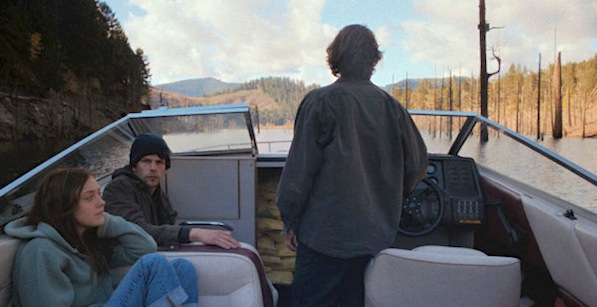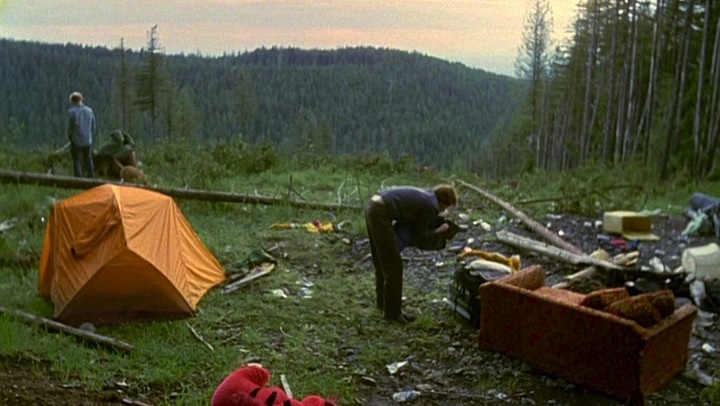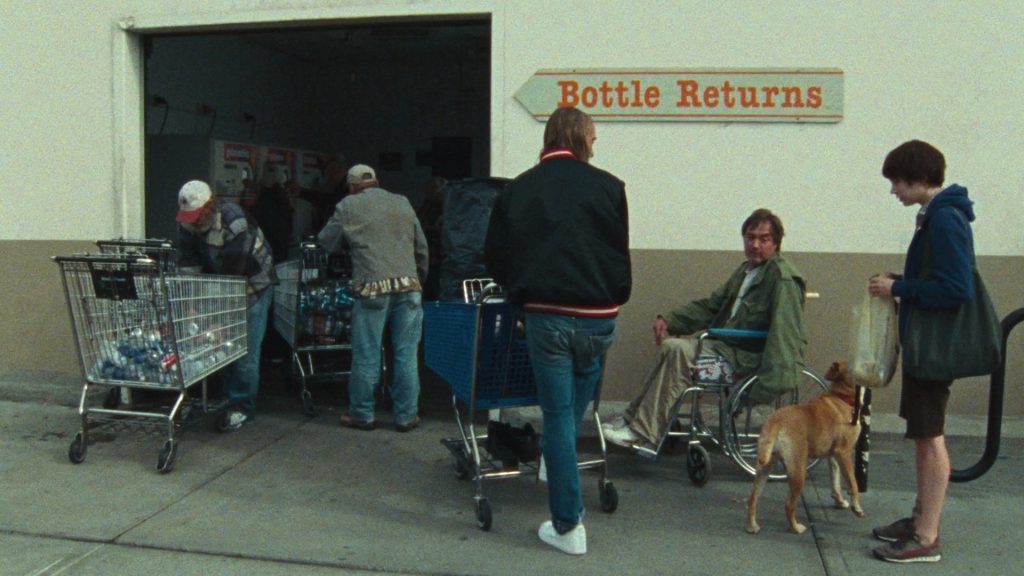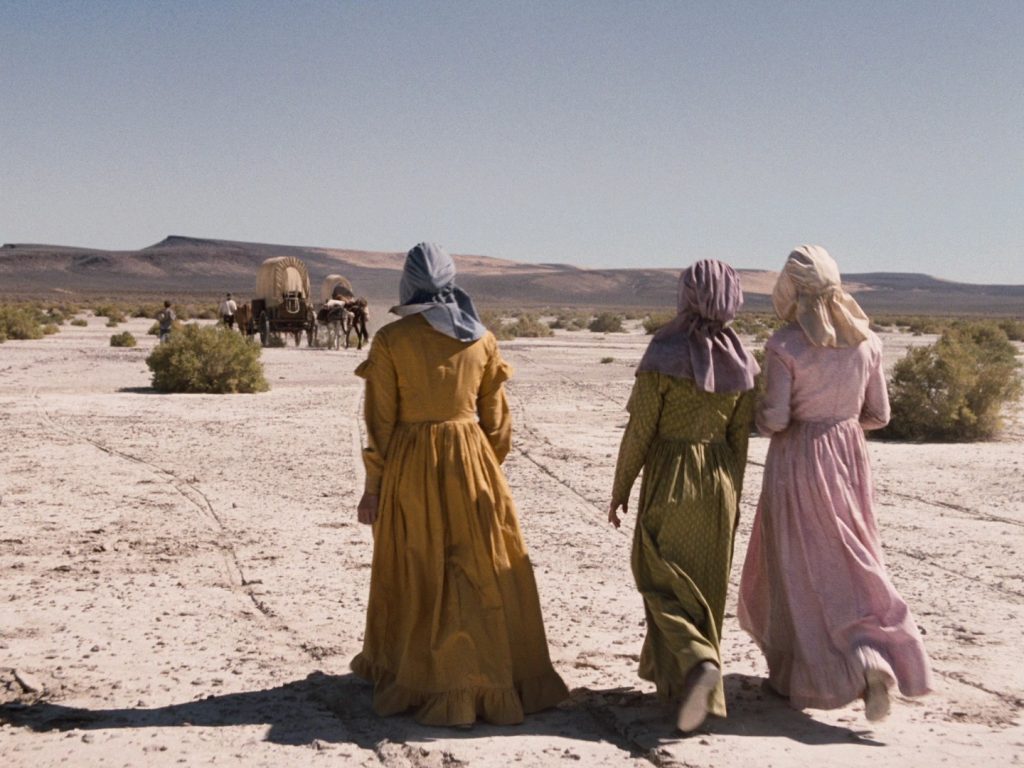Until very recently, the artistic arc of director Kelly Reichardt had followed a brave, esoteric, if nonetheless linear trajectory. Never easily pegged, Reichardt emerged for a brief moment as a reluctant Sundance darling in the mid-nineties with her debut, River of Grass, only to retreat from feature filmmaking for the better part of a decade (a series of shorts were completed in the interim). Her 2006 follow-up, Old Joy, was thus treated like something of a rebirth, and she made good on the attention, consistently maturing as both stylist and storyteller in the years since. Her newest film, Night Moves, which debuted at the Venice Film Festival last fall (and plays Riviera Maya this week), is set to be her highest profile outing yet. Starring Jesse Eisenberg, Dakota Fanning, and Peter Sarsgaard, the film takes a similarly meditative approach to genre as Reichardt’s 2011 western Meek’s Cutoff, but engaging these tropes as it does in service of a newly manifest consideration for plot mechanics, it ultimately arrives at a very different place than that of her earlier work.
Amongst other characteristics, Reichardt’s films can said to be excavations of a sort, formally exact, patiently unfolding depictions of landscapes in repose. The Pacific Northwest hinterland of Old Joy, the quaint suburbia of Wendy and Lucy, the parched desert expanse of Meek’s Cutoff: all evocative settings reflected in the simultaneously tranquil yet restless emotional lives of their characters. Night Moves doesn’t take Reichardt far from her natural surroundings (it too is set in Oregon), but it does evidence a concerted effort at narrative structuring and cohesion otherwise foreign to her prior efforts. This is both a logical and somewhat inevitable outgrowth of working in established genre territory. Meek’s Cutoff, despite a comparatively large budget and wider audience considerations, managed to elide traditional narrative progression and expository elements via ambiguously motivated characters and the inherently disorienting immensity of the Oregon Trail’s mid-century vistas. It remains arguably the most unique and ambitious of modern westerns.
By Reichardt’s modest standards, Night Moves tells an almost elaborate tale of radicalism, eco-terrorism, guilt, and paranoia. As the film opens, three moonlighting activists—by day a farmhand (Eisenberg), an over-privileged high school dropout (Fanning), and an ex-marine (Sarsgaard), respectively—motivated by youthful antagonism and misplaced ideology, are planning to blow up a local hydroelectric dam, a premise of ample potential and built-in intrigue, particularly in our modern state of social and political unrest. Reichardt and co-screenwriter Jonathan Raymond’s set-up is thus appropriately tense and involving, the procedural documentation of their characters’ strategy tastefully disclosed while the implications of their intentions are never left without tangible suggestion of consequence. Reichardt proves particularly skilled at building tension throughout, with her typically quiet, observational style, coupled with Christopher Blauvelt’s eerily glistening cinematography, utilized as an effective tool for eliciting anxiety. The film is nothing short of riveting for its first hour.
The emotional and visceral payoff implied by such a carefully arranged plot, however, proves less satisfying in execution. In a sense, Meek’s Cutoff concluded where most films would transition into a third act, with the wandering troupe’s Indian guide retreating toward the horizon, their collective future left uncertain. Night Moves, for its part, attempts to bridge a similar divide by pitting its players against one another for a second hour of protective measures and moral reckoning as these three characters each react differently to their crime. Dialogue, now in complete service to plot advancement and genre expectations, is blunt and bereft of any functionality outside of bringing these characters into final conflict. In short, the film moves from a state of moral and narrative ambiguity to a place of solidified action dependent on cause-and-effect motivations, familiar to fans of not only theatrical thrillers but also serialized television. This more conventional turn may bring up comparisons to The Monkey Wrench Gang, as Reichardt’s films have thus far had either literary or semi-factual roots. But despite the film’s passing resemblance to Edward Abbey’s parable, this is thorny enough material to take in any number of different, more audacious directions. (To Reichardt and Raymond’s credit, they do attempt to instill a sense of uncertainty in the film’s final moments, but by then sympathy for the characters has shifted, their fates more a matter of curiosity than genuine intrigue).
Of course, these developments are not unusual for any filmmaker attempting to push themselves into new territory with each successive work, and quite frankly most could only hope to make a film as formally accomplished as Night Moves (the opening images, static, deep focused compositions physically arranging the characters in opposition to their imposing, inanimate foe, are amongst the most arresting in recent American film). As mentioned, Reichardt’s evolution has thus far proven linear even as she has mostly retained an elusive approach to narrative. Her themes of alienation and escape, along with her sometimes austere yet stimulating aesthetic preoccupations, continue to tie together otherwise disparate work. If Meek’s Cutoff, as it now appears, took Reichardt’s formal and narrative conceptions to their absolute breaking point, then it’s easier to read Night Moves as a transitional work, with hints towards a future of perhaps even more efficient modes of genre storytelling. Less a step back, then, than a lateral shift, Night Moves confirms a far more calculating filmmaker than previously suggested, and one, it begs to reason, both literally and figuratively plotting her next move.








